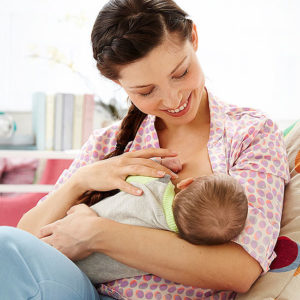The need for a pediatric eye specialist has seen a significant rise in past few years. It’s not very uncommon to see little kids wearing spectacles at such young age. And it is indeed heartbreaking to see those kids adjusting their spectacles while playing or running around! While there are several reasons and causes of eye problems amongst kids, do you know there are ways to prevent this from happening to your baby? Read on for Top Tips for Baby’s Visual Development.
There are many things parents can do to help their baby’s vision develop properly. This is because our eyes are the only organ that continue to develop even after we are born.
The moment baby is born, his vision kicks in and his visual development begins. At birth, your baby’s eyes have the visual acuity of 20/400, but his rapidly developing vision will reach the adult level of 20/20 by the time he is 3-5 years old. That rapid growth is why his first months are so important to his visual development.
The following are some Top Tips for Baby’s Visual Development and examples of age-appropriate activities that can assist your baby’s visual development.
Birth to four months
During the first 4 months of life, your baby should begin to follow moving objects with his or her eyes and reach for things. Reaching will become more accurate as hand-eye coordination and depth perception begin to develop. Here are some activities that you can do for these developments:
1.Alternatively change the side while feeding the baby.
2.  While nursing, keep your face close to the baby and look straight in baby’s eyes while talking to your little one. At this age, your baby will watch your lips move as you read, sing, and talk to him.
While nursing, keep your face close to the baby and look straight in baby’s eyes while talking to your little one. At this age, your baby will watch your lips move as you read, sing, and talk to him.
3. Ditch the pastels- Ensure that the baby’s room has vibrant colours of walls, curtains etc. Colors like red, orange or even black and white are more stimulating.
4. Use a nightlight or other dim lamp in your baby’s room.
5. Frequently change the crib’s position and your child’s position in it.
6. Keep reach-and-touch toys within your baby’s focus, about eight to twelve inches.
7. Use bright coloured squeaky toys for play-time.
8. Talk to your baby as you walk around the room.
Go Mommy Tip : Reading books and rhymes helps in the long run. While reading, use varied tones, expressions and pitch.
Click here to see “5 must-have books for infants”
Between 4 and 8 months
Now your baby should begin to turn from side to side and use his or her arms and legs. Eye movement and eye-body coordination skills should develop further, and both eyes should focus equally.
1.Hang a mobile, crib gym or various objects across the crib for the baby to grab, pull and kick. Motion is a great way to stimulate visual development.
Click here for “5 must-have toys for infants”
2. Make enough space for the baby to explore the floor. Tummy time is a must at this stage. Let the baby be on the floor and try to roll or just simply look around lifting his neck.
3. Babies start acknowledging their own hands and love to suck their fist at this age. You can hand over a colorful rattle that the baby can clutch tight and occasionally taste it too !
4. Play Peek-a-boo, pat-a-cake and other games, moving the baby’s hands through the motions while saying the words aloud.
5. Help your baby explore different shapes and textures with his or her fingers.
Go Mommy Tip: Touch & Feel books and Sensory balls help in this stage.
Click here to see “5 must-have books for infants”
Eight to Twelve months
At this stage your baby should be mobile now, crawling and pulling himself or herself up. He or she will begin to use both eyes together and judge distances and grasp and throw objects with greater precision.
1. Play hide and seek games with toys or your face to help the baby develop visual memory.
Go Mommy Tip: Stacking toys & Pull-apart toys are highly recommended
2. Name objects when talking to encourage the baby’s word association and vocabulary development skills.
Go Mommy Tip : Large picture books help in holding the baby’s attention and vision for longer duration.
Click here to see “5 must-have books for infants”
3. Encourage crawling and creeping. Crawling is important in developing eye-hand-foot-body coordination.
Go Mommy Tip : Toys with light & sound (not too loud though) work great here. I recommend Fisher price Bat & Crawl Rollerbar.
One to Two years
From 1 to 2 years, your child’s eye-hand coordination and depth perception will continue to develop. He or she will also begin to understand abstract terms.
1. Roll a ball back and forth to help the child track objects with the eyes visually.
2. Give the child building blocks and balls of all varied shapes and sizes to play with to boost fine motor skills and small muscle development.
Go Mommy Tip : Simple Puzzles and Blocks come handy for color recognition and hand muscle development.
3. Read or tell stories to stimulate the child’s ability to visualize and pave the way for learning and reading skills.
Click here for “8 Must-have Books for 1 year old Baby”
Two to Five years
This is a time for developing the basic skills of walking, talking, and learning how to learn. It is a time when your child is developing control of his body, his feelings, his thoughts, and his actions. For a Preschooler, following activities can help vision development and in turn strengthen not only his muscles, but also his perceptions, learning new skills, letting off excess energy, trying out different solutions to problems, and learning how to deal with other people.
1. Practice throwing and catching a ball.
2. Read aloud to your child and let him or her see what is being read.
Click here for “Top 7 Storybooks for 2 year old”
3. Provide a chalkboard or finger paints.
4. Encourage play activities requiring hand-eye coordination such as block building and assembling puzzles.
5. Play simple memory games.
6. Provide opportunities to color, cut and paste.
7. Make time for outdoor play including ball games, bike/tricycle riding, swinging and rolling activities.
8. Encourage interaction with other children.
Not too long ago, visual care meant only one thing- were glasses needed to correct an eye defect? The entire visual exam was devoted to answering this question. More deeper attributes that distinguish individuals from one another – like Meaningful seeing, spatial relationships, personality, intelligence, and individuality- were ignored.
Without good visual development, a child will develop functional visual problems which will influence his or her learning, motor abilities, and cognitive function as they progress through school and in later life. So, it’s best to start early!
Go Mommy!







